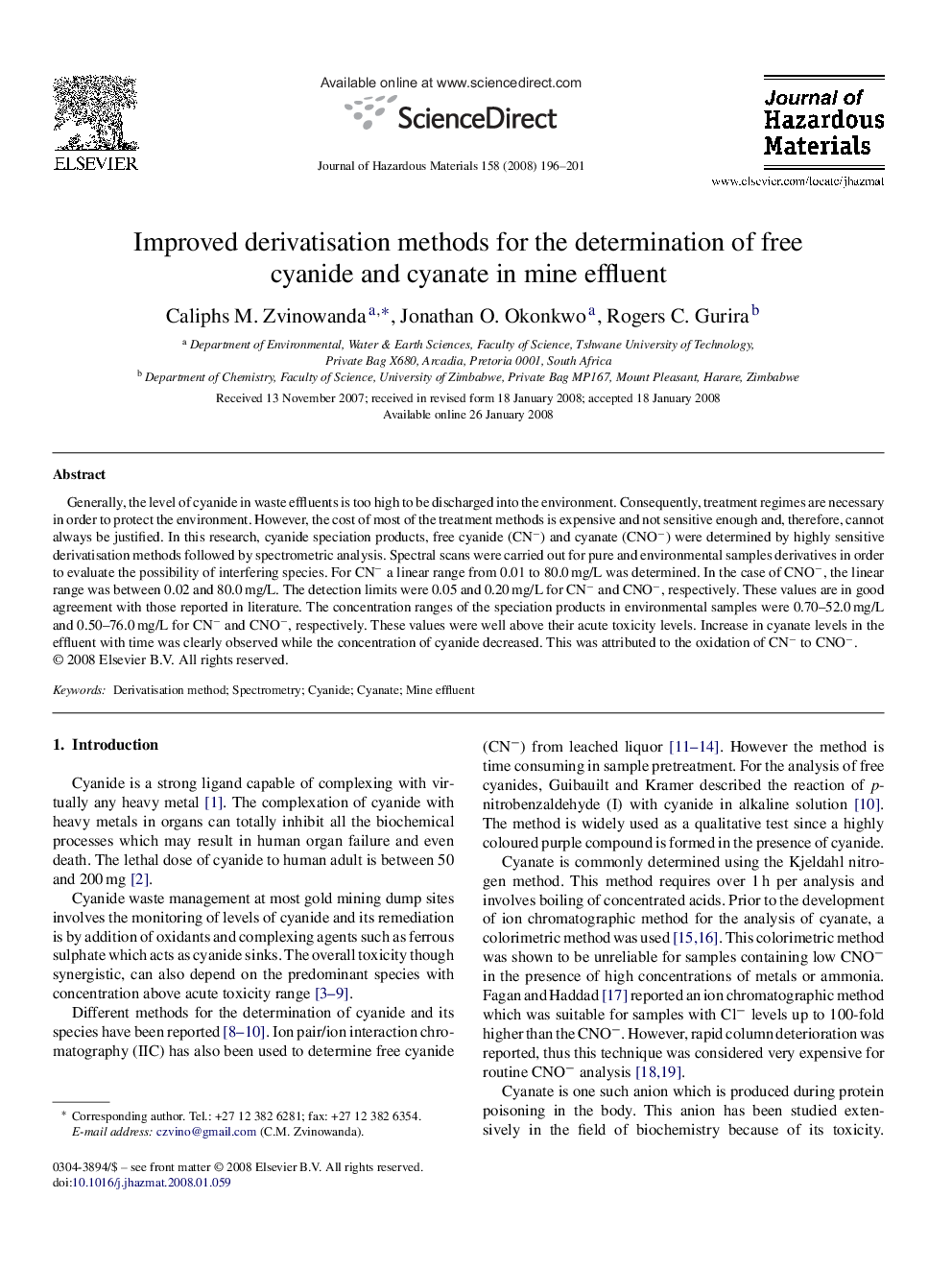| Article ID | Journal | Published Year | Pages | File Type |
|---|---|---|---|---|
| 582864 | Journal of Hazardous Materials | 2008 | 6 Pages |
Abstract
Generally, the level of cyanide in waste effluents is too high to be discharged into the environment. Consequently, treatment regimes are necessary in order to protect the environment. However, the cost of most of the treatment methods is expensive and not sensitive enough and, therefore, cannot always be justified. In this research, cyanide speciation products, free cyanide (CNâ) and cyanate (CNOâ) were determined by highly sensitive derivatisation methods followed by spectrometric analysis. Spectral scans were carried out for pure and environmental samples derivatives in order to evaluate the possibility of interfering species. For CNâ a linear range from 0.01 to 80.0Â mg/L was determined. In the case of CNOâ, the linear range was between 0.02 and 80.0Â mg/L. The detection limits were 0.05 and 0.20Â mg/L for CNâ and CNOâ, respectively. These values are in good agreement with those reported in literature. The concentration ranges of the speciation products in environmental samples were 0.70-52.0Â mg/L and 0.50-76.0Â mg/L for CNâ and CNOâ, respectively. These values were well above their acute toxicity levels. Increase in cyanate levels in the effluent with time was clearly observed while the concentration of cyanide decreased. This was attributed to the oxidation of CNâ to CNOâ.
Related Topics
Physical Sciences and Engineering
Chemical Engineering
Chemical Health and Safety
Authors
Caliphs M. Zvinowanda, Jonathan O. Okonkwo, Rogers C. Gurira,
